If you buy through our links, we may earn an affiliate commission. This supports our mission to get more people active and outside.Learn about Outside Online's affiliate link policy
Our Editors' Top 10 Tips for Beginner Skiers

Keri Bascetta (Photo: Keri Bascetta)
Skiing isn’t a sport that takes an hour to learn—it takes a lifetime. Even the most seasoned veterans are finding ways to improve. Just look at how professional ski instructors take clinics every year and ski patrollers attend annual conferences to learn about snowpack. If you’re just starting out, remember there is a lifetime of improvement ahead of you. With that being said, these 10 tips are a great place to start.
Watch: Initiating a Turn as a Beginner Skier
1. Bend Your Knees
The number one lesson on our list is also the most overlooked. Beginners aren’t used to being in a squatting position all day, so a lot of the time they’ll straighten their legs, messing up their form, balance, agility, and control. Bending your knees does a number of things; it forces you to shove your shins into the front of the boot, gaining control of your ski. It also centers your upper body above your legs, keeping your balance over your sweet spot.
When you bend your knees you’ll also be more prepared to absorb small jumps and uneven terrain. Having straight legs while skiing is like having straight legs when trying to stand up on a bus—either way you’re going for a ride, it’s just a matter if you want to be upright for it or not. Think you bend your knees enough already? Bend them some more and see how much better control you have through the bumps or down the steeps.
- Pro Tip: Your heel should always remain in the heel cup in your boot. If it doesn’t, then you’re probably not bending your knees enough.
2. Take a Lesson
There’s a reason that thousands of people a year go to the Professional Ski Instructors of America (PSIA) and the National Alpine Ski Training Center (NASTC) to learn how to ski: it works. Getting a lesson from someone trained to teach you how to ski will lead to dramatic improvements and a better experience than trying to learn on your own or with a friend. An instructor can watch your every move to see how your technique can improve, what you’re doing wrong, and what hints you’ll need to get better. Many options are available for a variety of different levels, whether you haven’t touched snow before or just want to get better in the bumps.
3. Go Slow, Have Patience
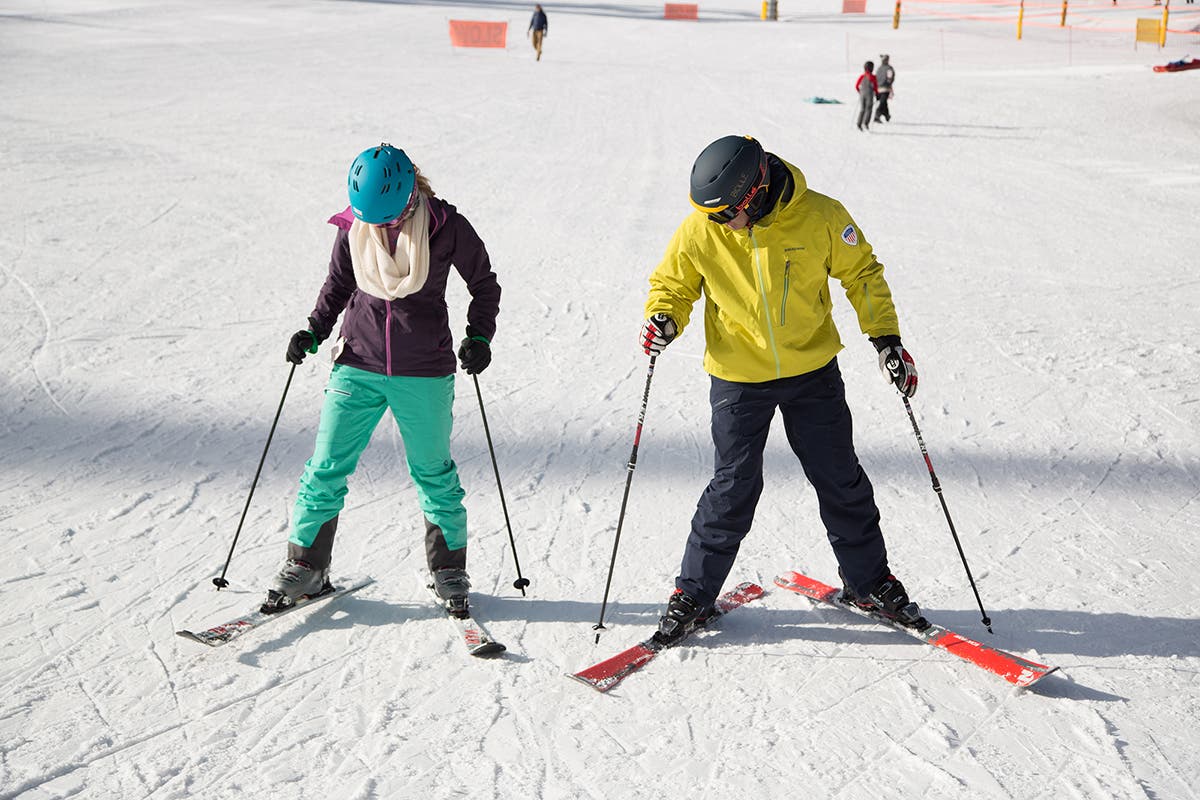
As with anything, learning to ski takes time. Only the most incredible athletes will be able to move from a “green” (beginner) to a “blue” (intermediate) run in one day, and even then there will be some hiccups along the way. Having unreasonable expectations of your abilities will get you extremely frustrated and leave you wanting to do the “walk-of-shame” down the run. If this happens, take a deep breath, focus on what you know, make it to the base area, and grab a cocktail. Once there, talk with your instructor about what you are doing wrong and what your goals are for the day/week/month/year. Eventually, you’ll get there if you just have a little patience.
- Pro Tip: Focus on small accomplishments. Did you get that left turn right? Pat yourself on the back.
Stay on topic: Top 3 Beginner Skier Mistakes
4. Dress Appropriately (Don’t Wear Jeans!)
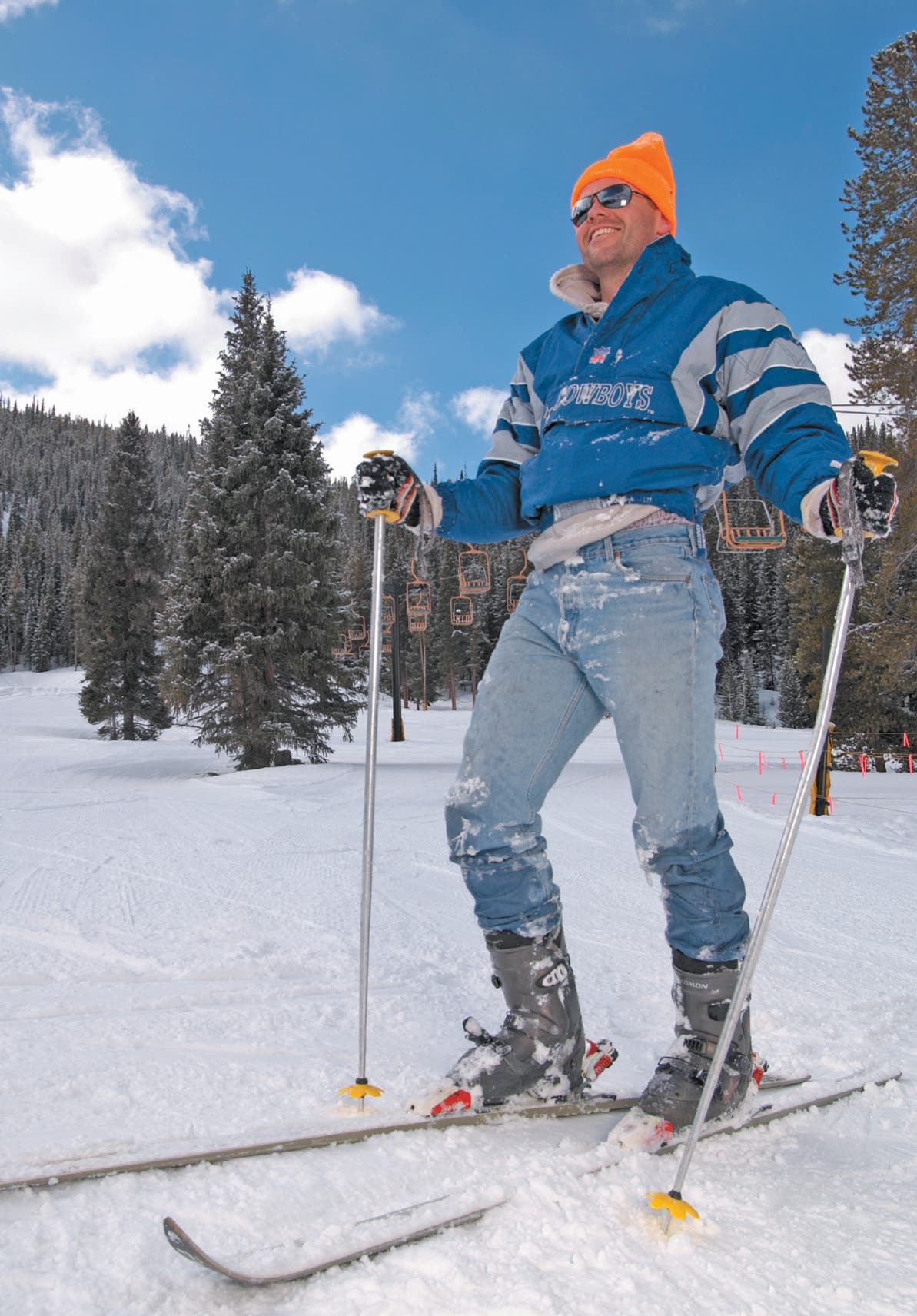
As a beginner, no one expects you to look like a sponsored athlete on your first day. It’s likely that you don’t have the right gear and clothing for a day on the slopes, but there are a few things you should get or rent. Proper fitting boots are the most important item on that list. Good boots make the difference between a bad and good day and not learning at all and becoming a superstar.
You should also rent or buy a pair of snowpants. You’ll be falling a lot (see #7), and you’ll need to stay warm and dry to maximize your time on the slopes and not in the lodge. A helmet is also a wise investment, as you can’t predict everything you do or the actions people around you take. Other items you should wear include gloves (you’ll need your hands warm), goggles (sunglasses break easy and snowblindness is a possibility), and sunscreen.
- Pro Tip: Forgot your gear? Many resorts rent snowpants, helmets, and more for a cheap fee.
Read more: All About Gear for First Time Skiers
5. Don’t Learn From a Loved One
This may come as a shock to you, but your wife or husband who is a professional ski instructor should NOT be the one to teach you how to ski. Learning a new sport will no doubt get you frustrated and scared, emotions that can often turn into anger and resentment towards the person that is teaching you. Getting into a fight in the middle of a ski slope is not the best idea as you might wind up by yourself with no one to help you get down. Trust us, get a lesson from a stranger whom you’re more likely to be nice to if something doesn’t go your way.
- Pro Tip: Want to teach your kids? That might work better as they already listen and respect you more than a fellow adult would.
How to start your kids skiing
6. Pick the Right Resort
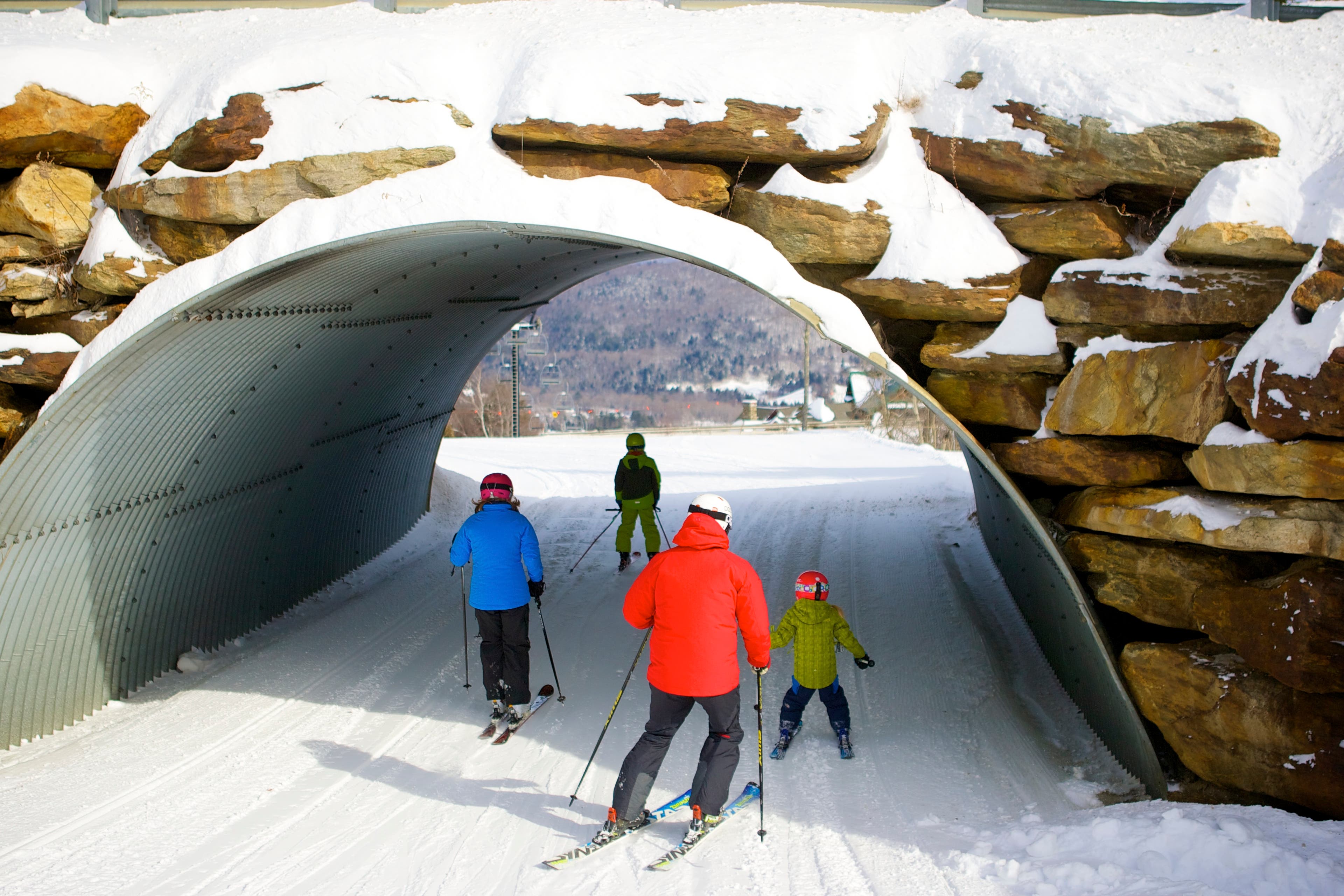
While some mega-resorts might have all the terrain in the world to choose from, the reality for most is that if it’s on one mountain, one type of terrain will dominate the landscape. Look for resorts that have excellent grooming, family programs, and ski schools. This combination will lead to a resort with a high learning curve.
- Pro Tip: Don’t overlook your local hill. It will likely have one great bunny hill for some easy practice.
7. Don’t Be Afraid to Fall
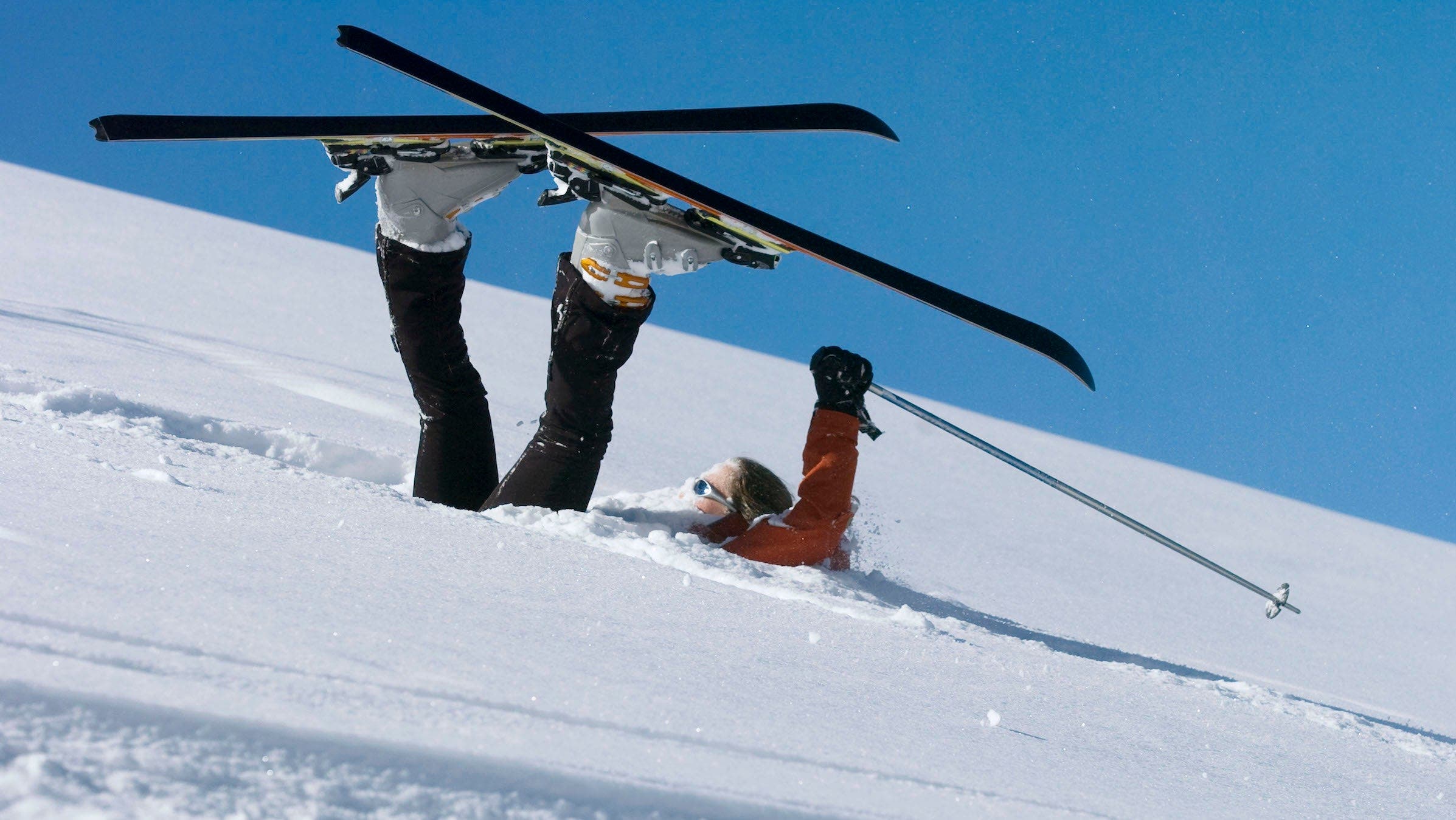
To some, this might sound like a stupid statement. But think about it: As a beginner, you won’t (or shouldn’t) be going too fast, snow is softer than you’d expect, and falling is a part of learning. You’ll fall. A lot. The only way to learn is to fall and just because you’re skiing shouldn’t make it scary. There are some ways to fall that you can try if it helps: Try to fall to your side versus forwards or backwards, which might make you twist something. If you fall, self-arrest yourself so that you don’t slide down the slope and either run into or over something. And of course, just get back up and try again.
8. Start Out on the Right Type of Terrain
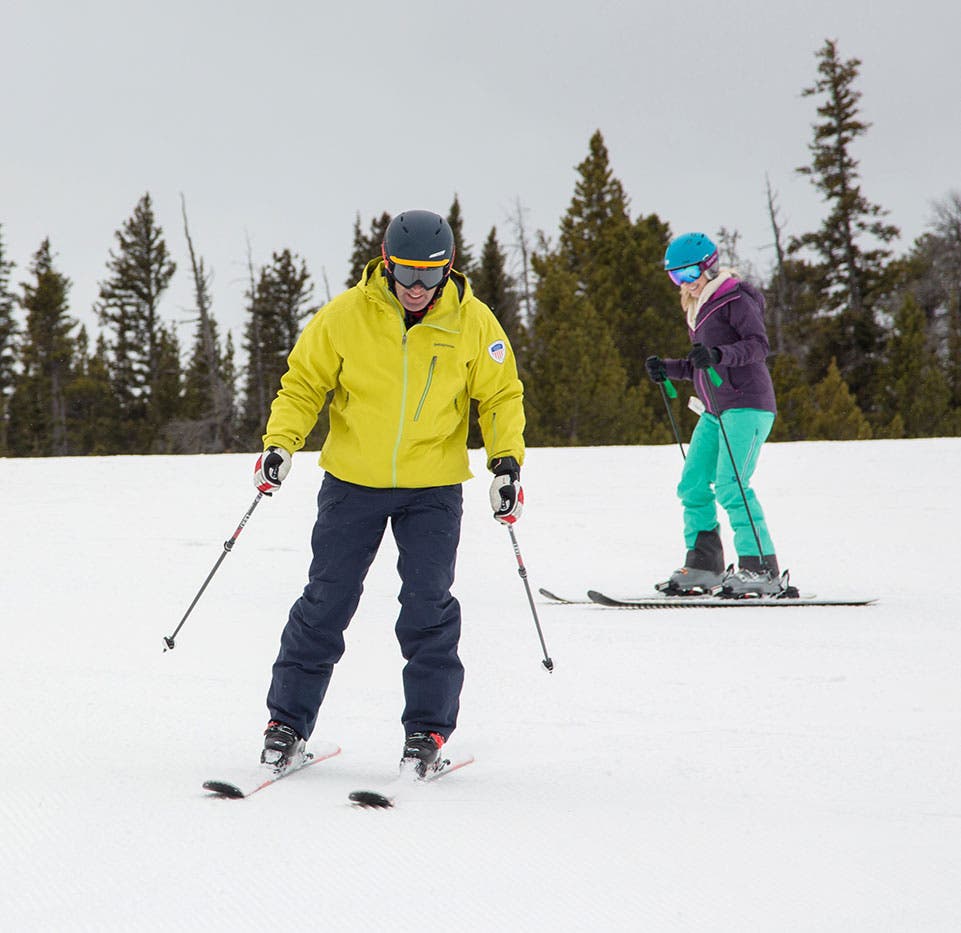
You wouldn’t go to Maui and surf the Big Kahuna waves if you’ve never surfed before, so you shouldn’t go to a ski area and go straight to the double-black diamond runs. Adults don’t like learning new sports as it can be a major hit to the ego, and skiing isn’t any different. Watching as advanced skiers head to the extreme terrain as you head to a green, can be tough, but it’s worth it. Green (beginner) runs are flatter, shorter, groomed, and not as steep so there are fewer obstacles and factors to screw up learning. When starting out, look to see if your resort has a magic carpet or Poma lift so that you can build up to a chairlift. Really honing your technique before you head to a blue (intermediate) will only make you a better skier overall.
- Pro Tip: Although you should aim for a flat run to start off with, you’ll need to get some speed to progress. Look for a balance between the two.
8. Don’t Look Down at Your Tips
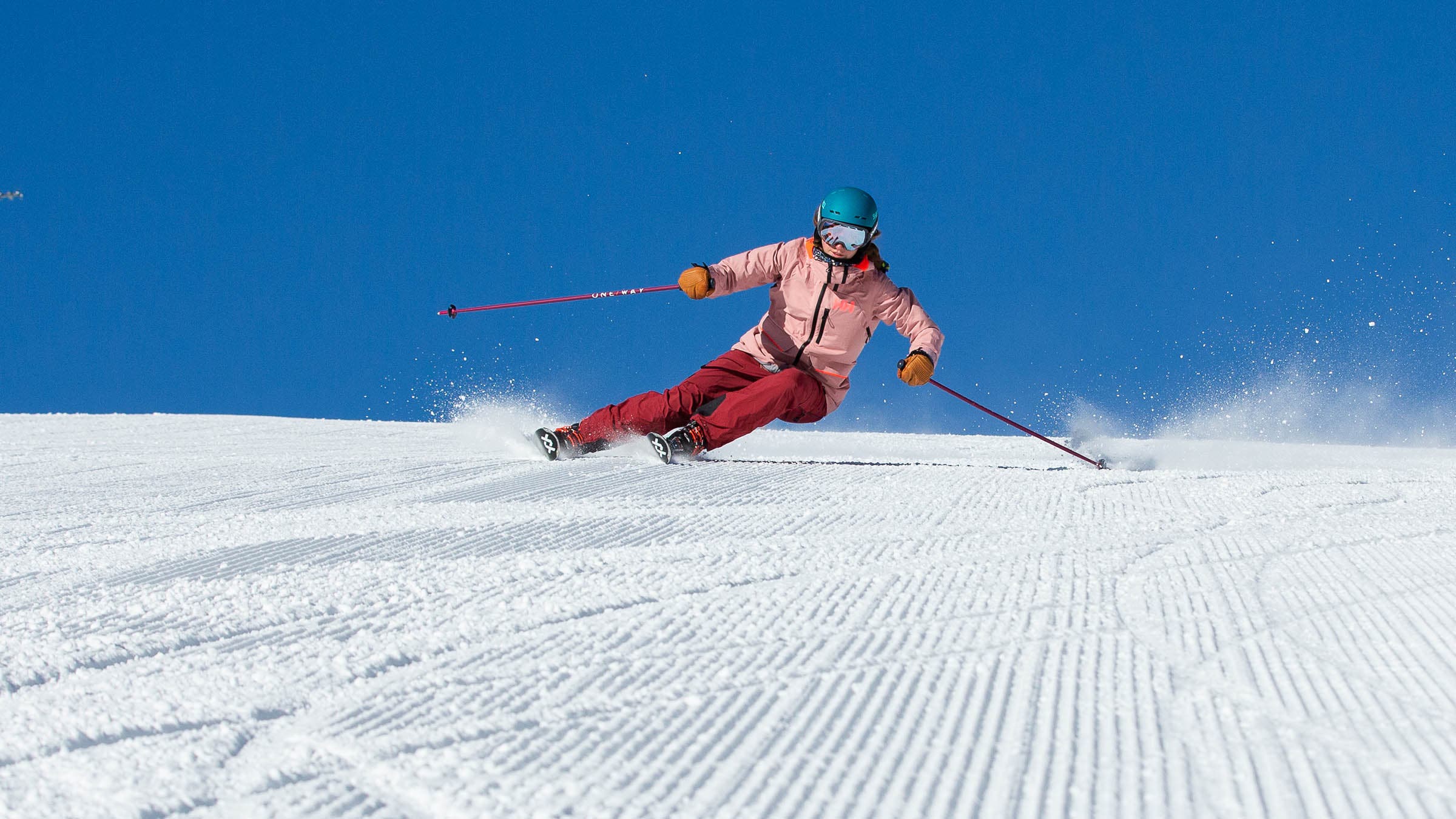
It’s a strange feeling to have long planks attached to your feet. Beginners want to see what the tips of their skis are doing at all times and often make the mistake of not looking forward. This has the same effect of looking down at your feet when you’re walking around—you’re bound to run into something. Ski instructors suggest looking about 10 feet (at least) ahead of you at all times. You can prepare for uneven terrain better, have a better sense of where you’re going, and focus more on what’s next, not what’s now. Besides, it helps to see that tree up ahead, especially if you are moving faster than a snail.
- Pro Tip: Looking ahead of you will automatically force your body to move that direction. It’s just like throwing a ball—where you point your hand is where you’ll go.
Read more: Looking Out for Yourself—and Others
9. Stay Evenly Balanced Over Your Skis
Skiing puts you into a pretty uncomfortable and awkward position if you aren’t used to it. The boots push you forward, but the weight of the front of your skis scoots you back. Many beginners will either lean way back (often referred to as back-seat skiing) or way forward to counter-balance themselves. This is wrong. Keeping your legs squarely under your torso with your shoulders pointing downhill will give you a stronger technique with more control. Keeping your body weight directly over the ski’s narrowest point (the sweet spot) will have the ski work for you, not against you.
- Pro Tip: If your feet are in front of your body, your leg muscles will have to work overtime to start your next turn. Skiing out of balance is exhausting. Skiing in balance is effortless.